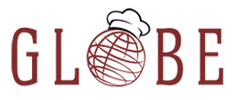How to Choose the Right Slicer
Apr 3rd 2012
There are many different commercial food slicers on the market today, ranging from a few hundred dollars up to thousands of dollars. As with any piece of equipment, it is important to make sure that the item will perform the way you expect it to for years to come. Product construction, product consistency and reliability should all be factored into the overall price when purchasing a slicer.
Performance
One of the toughest items for a slicer to get through is cheese. Cheese has a tendency to cause a lot of friction between the product and the blade causing the blade to “stick”. Making sure that you have enough power in the motor and blade should be one of your primary considerations. There are two different drive systems on the market today, gear driven and belt driven. In a gear driven scenario, there is a direct transfer of power between the motor, gears, and the blade. The result is more torque when product comes in contact with the blade. Additionally, there will be no chance for slipping or possibility of a belt breaking.
Consistency
All slicers will slice a product in thick slices, but the true mark of a precision slicer is being able to repeatedly cut paper thin slices. When customers are given thin slices, the taste and tenderness of the meat is enhanced. Also, when making sandwiches, thin slices will give you more folds, giving the appearance of more meat on the bread while actually serving less product and saving on food costs. Operators control the thickness of the meat with the table adjustment. There are two designs of the adjustment mechanisms, gear and plastic cam. With the gear style mechanism, once the table is set, there is no way for it to move. The plastic cam style a pin will move up and down a groove in the cam. After extended use, the plastic will start to wear, and in time will not hold it’s tolerance.
Cleanability
The foodservice industry uses more stainless steel than any other industry. The reason for this is the corrosion and pitting resistance and cleanability. The non-porous surface is the best option especially when slicing things like meat that may have listeria or other bacterial organisms. Aluminum is a less expensive material and is often seen in more economy slicers. Over time aluminum will pit allowing for small crevices for food particles and bacteria to live in. Over time it becomes difficult to clean and virtually impossible to sanitize.
Blade Size
Slicers come in various size blades ranging from 9" up to 14" in the commercial setting. Just because a blade is 12" does not mean that it can cut a product that large. The very top and bottom of the blade do not actually do any cutting, and there has to be consideration for the sharpener and other components. On average, you can that the dimension you can put in a slicer is 2" less than the overall blade length. That means, if you have a 9" slicer, the maximum cutting dimension will be 7". These dimensions will vary based on manufacturer.
Factors to Consider
There are many questions you should ask yourself when making a decision on which slicer to purchase.
- What types of product you will be slicing?
- How many hours will the slicer be used per day?
- What safety features are important to you?
- How large is the product to be sliced?
- What are the warranties and maintenance costs the unit you are selecting?
Globe Equipment Recommends:
If you are a location that has slicer use of 4+ hours a day, we would recommend at a minimum a slicer such as the Globe G10. These slicers are built and designed for the rigorous use that delis and large cafeterias would put them through. The Globe slicers are the only gear driven slicers that we offer. Although the Hobart is a belt driven slicer, they are manufactured for heavy duty use. All of these slicers are made from stainless steel as well.
The mid range slicers we offer would be the Globe G series. Mid range slicing is considered anywhere from 1 to 4 hours of use per day. These slicers are all belt driven and manufactured from Aluminum.
The economy slicers we offer are part of the Globe C series. These, too, are all belt driven slicers and have the smallest commercial motors. the economy slicers are meant for light use of up to 1 hour per day. These slicers have less of an angle on the food chutes requiring the user to sometimes push the product into the blade rather than having gravity feed the product into the blade. This can sometimes cause inconsistent thicknesses.
Other models are also available with automatic carriages, built-in scales, or even frozen food blades.
